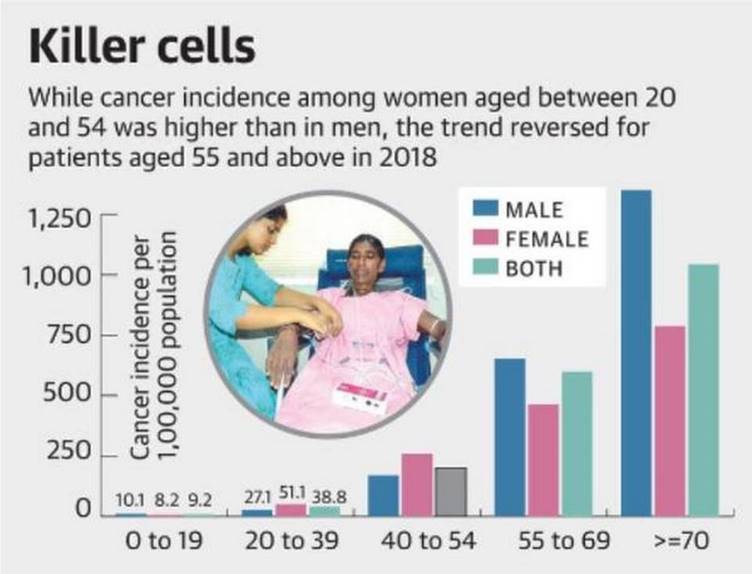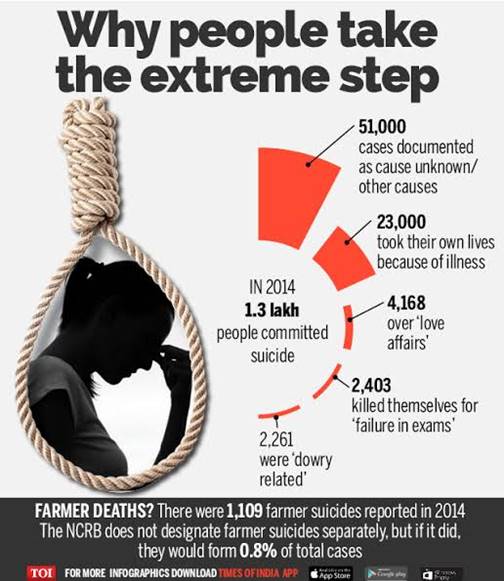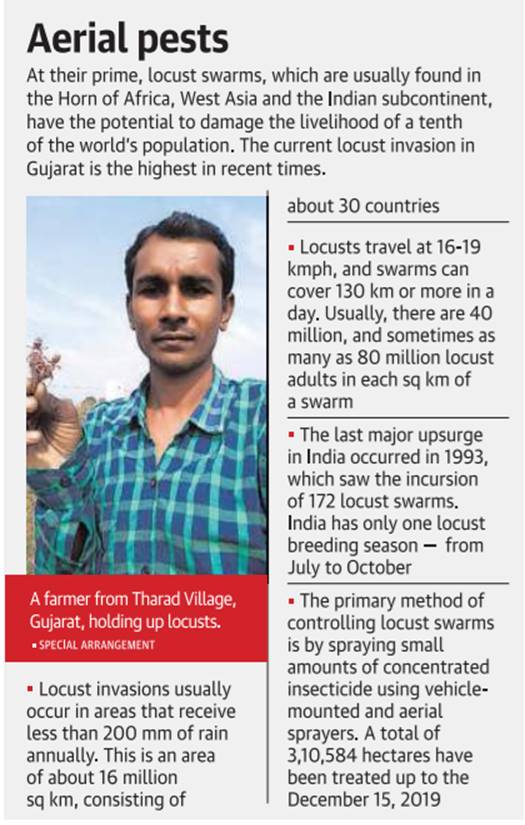



Study warns of growing cancer burden across India
In a significant find, the Epigraphy Branch of the Archaeological Survey of India has discovered the earliest epigraphic evidence so far for the Saptamatrika cult. It is also the earliest Sanskrit inscription to have been discovered in South India till date.
- Saptamatrikas are a group of seven female deities worshipped in Hinduism as personifying the energy of their respective consorts.
- The inscription is in Sanskrit and in Brahmi characters and was issued by the Satavahana King Vijaya in 207 A.D.
- The inscription was discovered in the Chebrolu village in Guntur district of Andhra Pradesh.
- It records the construction of a prasada (temple), a mandapa and consecration of images on the southern side of the temple by a person named Kartika for the merit of the king at the temple of Bhagavathi (Goddess) Saktimatruka (Saptamatrika) at Tambrape; Tambrape being the ancient name of Chebrolu.
- The new discovery predates references of Saptamatrika worship in the early Kadamba copper plates by almost 200 years.
- The Chebrolu inscription of Satavahana king Vijaya issued in his 5th regnal year – 207 A.D. — is also the earliest datable Sanskrit inscription from South India so far.
- According to Matsya Purana, Vijaya is the 28th king of the Satavahana dynasty and ruled for 6 years.
- So far, the Nagarjunakonda inscription of Ikshavaku King Ehavala Chantamula issued in his 11th regnal year corresponding to the 4th century A.D. was considered the earliest Sanskrit inscription in South India.
The anti-Citizenship (Amendment) Bill protests have brought demands of the Adivasis or tea tribes in Assam to the forefront.
- Land deeds for settlement of landless Adivasis.
- Appointment of Adivasi language teachers in the State’s higher secondary schools.
- Taking in more students of the community free UPSC, medical and engineering coaching classes.
- Adivasis, comprising 106 subgroups, are the largest of the six communities demanding the ST status.
- Submit a revenue circle-wise list of eligible beneficiaries for providing land pattas [deeds] to the tea community.
- Steps will be taken for granting Scheduled Tribe status to the community after the submission of a report by a group of Ministers.
A study tracing the growing burden of cancer in India states that most of the increase in cancer incidences are attributable to its epidemiological transition and improvement in the use of cancer diagnostics.

- India’s cancer burden will continue to increase as a result of the ongoing ageing of India and improving access to cancer diagnostics in rural India.
- While cancer like diseases were documented since antiquity, but the recording of cancer in India began in the 19th century when the Western practices of biopsy and pathological examination were introduced to India.
- Maximum increases will occur in the most populous and least developed States, where the facilities for cancer diagnostics and treatment are inadequate.
- Present study offers lessons for planning cancer care in States as well as other countries experiencing epidemiological transition.
- Low incidences of infectious diseases in Kerala has given rise to more cancer compared to U.P., which is still battling high mortality from communicable diseases.
- Epidemiological transition is a phase of demographic development, witnessed by a sudden and stark increase in population growth rates brought by improved food security and innovations in public health and medicine, followed by a re-levelling of population growth due to subsequent declines in fertility rates.
A national strategy for suicide prevention is under discussion at the Ministry of Health and Family Welfare. Strategy should remove confusion surrounding Article 309 of the Indian Penal Code (IPC) according to which attempted suicide continues to be a criminal offence.
- The Mental Healthcare Act (MCHA), 2017 has made it “redundant” but it continues to remain in the law books.
- Section 309 of the IPC says that a suicide attempt is punishable with simple imprisonment, which may extend up to one year, Section 115 of the MCHA, 2017 states: “…any person who attempts to commit suicide shall be presumed, unless proved otherwise, to have severe stress and shall not be tried and punished under the said Code (Section 309 of IPC).
- Criminalizing suicide waste golden hour of providing effective treatment.
- In cases dealing with Section 309 of IPC, the conviction is as high as 30 % because of the “clinching evidence” available in these cases.
- Whenever a patient who has attempted suicide is taken to a hospital, the first duty of the hospital is to provide him or her medical intervention and then inform the police.
- Section 309 of IPC also puts a burden on the police for whom the only time this law comes to use is “when politicians go on a hunger strike".
- Country has the highest rate of suicide among young women between 19 to 29 years.
- India continues to have the dubious distinction of recording the highest number of all suicides (34%) in the world.
- Suicide attempt survivors are often viewed as attention seekers.
- It is also a common myth that those who try to kill themselves are cowards.
Reasons behind Suicide:
- Many youth takes to suicide due to value clashes within the family, where family has traditional values while youth possess the democratic and modern values.
- High unemployment rate, poverty, drug addiction and mental health disorder forces people to go for suicide.
- Peer pressure, not able to withstand the pressure of education is also the reasons behind it.
Solution to Prevent Suicide:
- Family support and cohesion, including good communication.
- Peer support and close social networks.
- School and community connectedness.
- Cultural or religious beliefs that discourage suicide and promote healthy living.
- Adaptive coping and problem-solving skills including conflict-resolution
- General life satisfaction, good self-esteem and sense of purpose
- Easy access to effective medical and mental health resources.
- The curriculum should be designed in ways that it stresses on importance of mental exercises and meditation.
- Delhi government’s initiative on the ‘Happiness Curriculum’ may be a step in the right direction. Constituting Equal Opportunity Cells with an anti-discrimination officer in universities and colleges can make college inclusive.
- Implementing Rashtriya Madhyamik Shiksha Abhiyan (RMSA) to provide guidance and counselling services to students.

Prime Minister Narendra Modi launched the Atal Bhujal scheme to strengthen the institutional framework for participatory groundwater management and bringing about behavioural changes at the community level for sustainable groundwater resource management in seven States.
- The scheme will be implemented in about 8,350 gram panchayats in 78 districts of Gujarat, Haryana, Karnataka, Madhya Pradesh, Maharashtra, Rajasthan and Uttar Pradesh.
- Of the total outlay of Rs. 6,000 crores to be provided from 2020-21 to 2024-25, 50% will be in the form of World Bank loan to be repaid by the Central government.
- The entire World Bank’s loan component and the Central assistance will be passed on to the States as grants.
- The schemes aims to deliver water to every household in the country by 2024.
- A comprehensive and holistic approach had been adopted with the setting up of the Jal Shakti Ministry, which this monsoon made extensive efforts for water conservation.
- The Jal Jeevan Mission would work towards delivering piped water supply to every house and Atal Bhujal scheme would pay special attention to those areas where the groundwater was very low.
- To incentivise gram panchayats, those with better performance would be given more allocation under the scheme.
- Both the Central and State governments would spend Rs. 3.5 lakh crores on water-related schemes in the next five years.
- Over-exploitation of groundwater resources in India has been of great concern due to its impact on water availability and as well as on the environment.
- A recent report of NITI Aayog on groundwater level says 21 Indian cities including Delhi, Bengaluru, Chennai, and Hyderabad will run out of groundwater by 2020.
- It also says that 40 percent of India’s population will have no access to drinking water by 2030.
Reference: https://www.thehindu.com/news/national/modi-launches-atal-scheme-on-groundwater/article30398514.ece
To promote uptake of the Internet in rural areas, government promised free Wi-Fi to about 48,000 villages, which are connected through the government’s flagship Bharatnet project, for the next three months.
- Under the Bharatnet initiative, the government has already connected 1.3 lakh gram panchayats.
- The target is to take this to 2.5 lakh gram panchayats. With the Bharatnet initiative, the Centre aims to connect all 2.5 lakh gram panchayats through optical fibre.
- The government is aiming to convert at least 15% of the total villages to digital villages in the next 34 years.
- Digital Village, which was conceptualised by the Common Service Centre (CSC) Special Purpose Vehicle under the Ministry of Electronics and IT, is a village where citizens can avail various eservices of the Central and the State governments, as well as of private players.
- These include banking, insurance, tele-medicine, pension and e-governance services.
- Such villages are also equipped with LED bulb assembly unit, sanitary napkin unit, and rural Wi-Fi infrastructure.
- Government had announced the government’s target of one-lakh villages as Digital Villages over the five years.
Crops in Gujarat are under attack from grasshoppers known as locusts that have flown in from Pakistan.
- Locusts are a collection of certain species of short-horned grasshoppers in the family Acrididae that have a swarming phase.
- Under suitable conditions, they start to breed abundantly, and become nomadic (loosely described as migratory) when their populations become dense enough.
- Swarms of these pests move around, rapidly strip fields and cause damage to crops.
- The adults are powerful fliers; they can travel great distances, consuming most of the green vegetation wherever the swarm settles.
- The UN Food and Agriculture Organisation (FAO) had earlier warned of a massive locust attack in South Asia, covering Pakistan and India.
- Also, the Locust Warning Organization (LWO) in Jodhpur had noticed the swarms and predicted their trajectory across the international border.
- According to the Agriculture Ministry’s Locust Warning Organisation (LWO), locusts are flying in from Pakistan’s Sindh province and spreading in villages in Rajasthan and Gujarat where southwestern monsoon was prolonged in 2019.
- They have ravaged farms in north Gujarat, devastating farms in the three border districts — Banaskantha, Patan and Kutch.
- The locusts, known as tiddis locally, have wreaked havoc on standing crops including castor, cumin, jatropha, cotton and fodder grass in around 20 talukas.
- The insects fly in during the day and settle on the farms at night, making it difficult to ward them off.
- The farmers under siege are hiring workers and using age-old techniques like beating drums and vessels to scare the locusts away without much success.
- The State administration, along with the central teams, has launched a huge pesticide spraying operation to kill the insects.
- The government has now assured farmers that the administration will carry out a survey to assess the damages and will accordingly compensate farmers.

Recently, the Cabinet Committee on Security (CCS) approved the creation of a Chief of Defence Staff (CDS) who will be the single-point military adviser to the government as suggested by the Kargil Review Committee.
- The CDS will be a four-star general and his salary will be equivalent to that of the service chiefs.
- The CCS also approved the report of a high-level committee, headed by National Security Advisor Ajit Doval, which finalised the responsibilities and the enabling framework for the CDS.
- As per the recommendations, a Department of Military Affairs headed by the CDS will be created under the defence ministry.
- The CDS will be the first among equals among service chiefs. However, in the list of protocol, the CDS will be higher than the service chiefs.
- Ensure ‘jointmanship’ among the three services.
- Setting up a few theatre commands as well as allocating military assets among the services to synergise their operations.
- At present, the three services coordinate their work under the framework of the Integrated Defence Staff (IDS), which will be subsumed into the new structure after the appointment of the CDS.
- The CDS will also act as a single-point military adviser to the prime minister and defence minister on key defence and strategic issues.
- The CDS will be ‘wearing two hats’, he will also be functioning as a Secretary in the MoD that already has four Secretaries.
- It will bring in synergy among the three Services at the higher level and optimise resource utilisation.
- However, it needs a change in the mindset of all stakeholders and the CDS has to take the three Service Chiefs along to achieve the mandate.
- The creation of a new department, DMA, with the CDS at the helm and the dual roles as Secretary to the Government of India and Permanent Chairman, COSC, as “very innovative”.
- The three-year time frame to the first CDS to bring about jointness in several areas including operations, logistics, transport and training.
- CDS will draw power from minister and government much like NSA. Hence, effectiveness will always remain in doubt.
- Political consensus was a basic requirement for creation of CDS; however, the decision is unilateral.
- He should be a member of Cabinet for better appraisal of requirements.
- CDS post is more required for strategic issues than internal security. The Post can wait until India becomes a regional power.
Reference: https://www.thehindu.com/news/national/cds-will-bring-in-synergy-say-experts/article30397467.ece
Government think-tank NITI Aayog Member Ramesh Chand made a case for only two slabs under the Goods and Services Tax (GST) regime as against the current multiple slabs, and said rates should be revised annually, if required.
- Focus should be on a steady increase in revenue collection from the new indirect tax regime rather than tinkering with rates.
- At all rates needed to be changed, it should be done annually.
- When a large taxation reform such as GST is brought in, there are always, ‘teething problems’ but soon they stabilise. Most of the countries took a long time for GST stabilisation.
- There should not be fiddle with rates or rate changes frequently and instead of having multiple rates, there should be only two rates.
Goods and Services Tax (GST) is an indirect tax (or consumption tax) imposed in India on the supply of goods and services. It is a comprehensive multistage, destination-based tax: comprehensive because it has subsumed almost all the indirect taxes. Goods and services are divided into five different tax slabs for collection of tax - 0%, 5%, 12%, 18% and 28%.
- Central excise duty
- Services tax
- Additional customs duty
- Surcharges
- State-level value added tax
- Octroi
Petroleum products, alcoholic drinks and electricity are not taxed under GST and instead are taxed separately by the individual state governments.
Reference: https://www.thehindu.com/business/niti-member-bats-for-2-gst-slabs/article30398021.ece
With the passing of the Recycling of Ships Act, India aims to garner at least 60% of the global ship recycling business and emerge as a key destination for recycling warships and other ships.
- Just 0.05% of the world’s ships by weight were made in India in 2018, according to the United Nations Conference on Trade and Development (UNCTAD).
- India is a world leader in global ship recycling business.
- Between 2016 and 2018, India’s share of the gross tonnage of ships recycled worldwide slid from 31% to 26%, as per UNCTAD data, while Bangladesh’s rose from 28% to 47%.
- India hopes its new Recycling of Ships Act and its recent accession to the Hong Kong International Convention (HKC) for the Safe and Environmentally Sound Recycling of Ships, 2009, will put the country back on top.
- Gujarat’s Alang, the world’s biggest shipyard, was ready to cater to the projected increase in the number of ships for recycling.
- India recycles around 300 of the 1,000 ships, which are demolished per annum globally.
- Japan, the United States and Europe were not sending their ships for recycling to India in the absence of ratification of the Hong Kong Convention.
- Recycling of Ships Act, 2019 ratifies the Hong Kong Convention and would facilitate an environment-friendly process of recycling ships and adequate safety for yard workers.
- The International Maritime Organisation (IMO) adopted the Hong Kong Convention in 2009, which is aimed at ensuring that ships being recycled after reaching the end of their operational lives do not pose any unnecessary risks to human health, safety and to the environment.
- In November 2019, the Cabinet Committee on Economic Affairs (CCEA) approved India’s accession to the Hong Kong Convention, which will help provide a boost to the shipwrecking industry in India.

© 2025 iasgyan. All right reserved